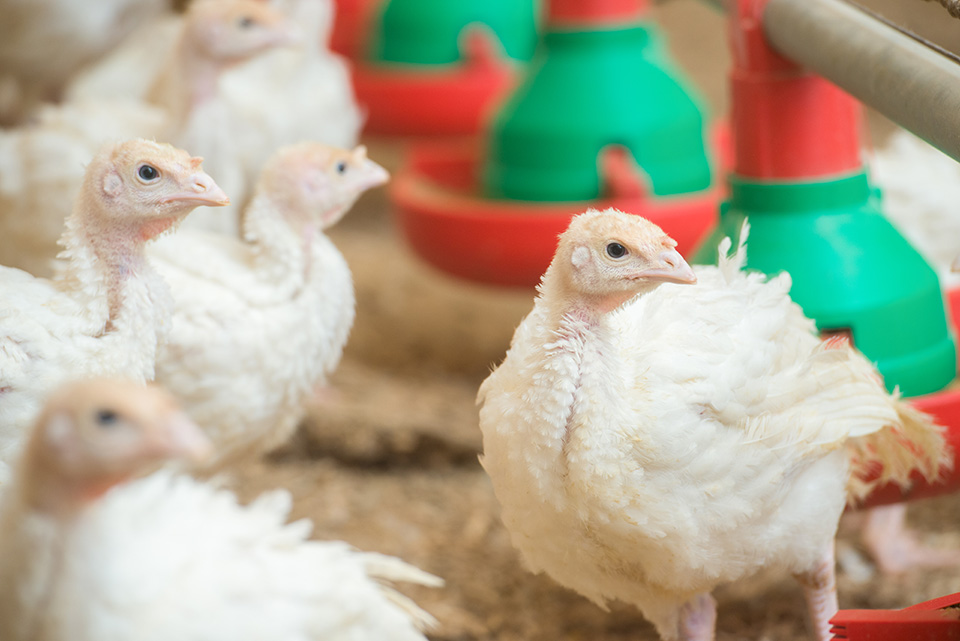
(Photo: Iowa Soybean Association / File Photo)
Soybean farmers can help mitigate bird flu risk
November 9, 2023 | Bethany Baratta
An estimated 4.7 billion wild birds make their migration from the United States to warmer climates as fall turns to winter. With this migration comes an unexpected and unappreciated souvenir for Iowa’s turkey, chicken and egg producers: an increased risk and spread of highly pathogenic avian influenza (HPAI).
Iowa producers lost nearly 16 million birds to the disease in 2022. Prior to outbreaks beginning last month in Iowa, there hadn’t been a case reported in the state since March 2023.
Eight cases of avian influenza have been confirmed in commercial turkey operations, backyard flocks, commercial breeding chickens and game bird ducks since October 2023, according to the Iowa Department of Ag and Land Stewardship (IDALS).
“Unfortunately, highly pathogenic avian influenza continues to be an active threat to our state’s turkey producers, egg layers, and backyard flocks,” says Iowa Secretary of Agriculture Mike Naig. “We encourage everyone to remain vigilant, review their biosecurity plans and ensure they are fully implemented.”
Since the outbreak began in 2022, there have been 845 cases in 47 states affecting 59.02 million birds nationwide. In total, this is the single largest foreign animal disease outbreak in United States history, according to IDALS.
With fall migration underway, Iowa’s poultry producers and those with backyard flocks remain on high alert.
“Farmers are working diligently to mitigate the spread,” says Morgan Pothoven, spokeswoman for the Iowa Turkey Federation. “They practice good biosecurity, and limit and track movement on and off the farm so they don’t bring diseases near or into the barns.”
But migratory birds are beyond farmers’ control. Research shows HPAI can survive for more than a month in bird droppings in cold weather and for nearly a week in warmer temperatures.
Dried bird droppings in the fields can potentially become aerosolized when the soil is disturbed. This allows the virus to spread via dust in the wind.
How can soybean farmers help prevent the spread to turkey, chicken, and egg-layer farmers?
- Consider the location of your neighbor’s barns while deciding when to work a field.
- Check what direction the wind is blowing. Is it possible to arrange fieldwork on days the wind is not blowing toward the barns?
- Communicate with your neighbors. If your neighbors who produce turkeys, chickens or eggs know you will be working in the field, they may be able to mitigate the risk with enhanced biosecurity efforts.
Impacts on soybean industry
Eggs, turkey and poultry production are large consumers of soybeans; reducing the number of beaks to feed impacts feed demand. Iowa is the No. 1 in egg production; one in every six eggs produced in the country comes from the state.
According to a study from Iowa State University, in 2018, there were 57.7 million layers in Iowa that produced 16.4 billion eggs, or 17% of the U.S. egg production. Laying hens and pullets consumed 531,317 tons of soybean meal and 57.8 million bushels of corn that year.
Iowa ranks seventh in U.S. turkey production; producers here raise nearly 12 million turkeys annually. Turkeys gobble up nearly 110,000 tons of soybean meal and 9.7 million bushels of corn annually in the state.
No threat to food safety
Turkey, poultry and egg products will be readily available for your Thanksgiving feast, and consumers shouldn’t worry about the safety of the products on store shelves, Pothoven says.
“These birds will not enter the food system, so you have no concern about any of the birds that have been affected making it to your dinner plate," she says.
Kriss Nelson contributed to this story.
Back